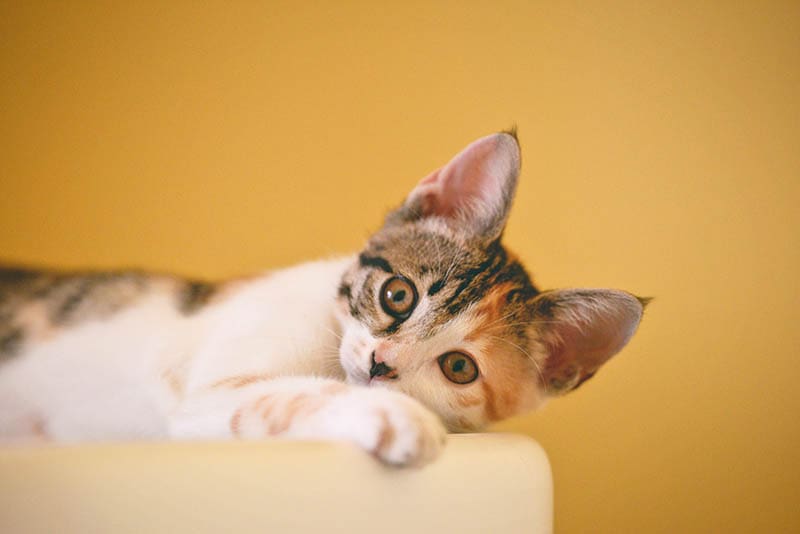Click to Skip Ahead
Are you on the lookout for help finding the right name for your cat? Have you spent days observing your new companion and contemplating the subtleties of their personality and behavior and are simply looking for a name that resonates? Or are you still browsing name lists to see if something strikes you as having potential? No matter where you are in the process, some inspiration can always help. Below you’ll find 250 fun cat names, starting with the letter K.
How to Name Your Cat
Naming cats can be approached in several ways. You can concentrate on finding one that reflects how your cat looks or look for something that describes their unique, quirky behavior. You can seek inspiration from the name of a remarkable city from your past or even a location related to how you and your cat came to be part of the same family. The sky’s the limit when coming up with creative names for your cat.
Male Cat Names That Start With K
Many traditionally masculine names start with K, but several names on this part of the list work equally well for male and female cats. Whether your cat is a Koopa or a Kobe, you will likely find a fitting name.
- Kruger
- Kyle
- Kai
- Kalon
- Koopa
- Kyo
- Kermit
- Klaus
- Kiefer
- Kato
- Kenji
- Keanu
- Kevin
- Krispin
- Kurt
- Kristoff
- Krobus
- Kleo
- Krusty
- Kronos
- Kess
- Kazo
- Kris
- Kargo
- Kramer
- Kaiser
- Korbin
- Kirk
- Kirkland
- Kilo
- Kovo
- King
- Kirtland
- Kam
- Kismet
- Klaw
- Klee
- Kennedy
- Knight
- Kit Kat
- Knut
- Keegan
- Kobe
- Kojo
- Kole
- Kemi
- Kipling
- King Arthur
- Kent
- Keith
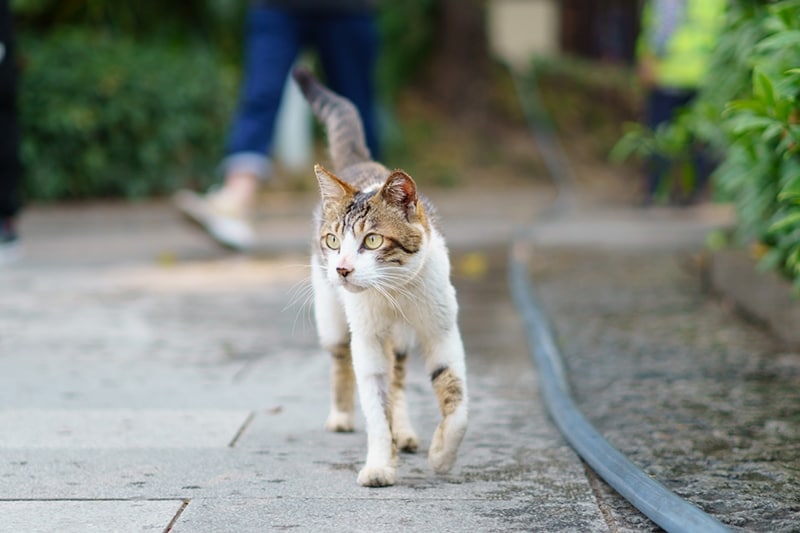
Female Cat Names That Start With K
Some popular and traditional female names begin with the letter K. There aren’t many unisex options here, but that’s mostly because there are so many cool names for female cats that start with the letter K.
- Karin
- Katty
- Kala
- Katherine
- Kylie
- Kaiya
- Kiera
- Katya
- Katniss
- Kalina
- Kira
- Kamara
- Kitty
- Kyla
- Kristina
- Krista
- Kim
- Kiona
- Kimba
- Kimberley
- Kendra
- Kerry
- Katheryn
- Kathy
- Keda
- Kate
- Kayleigh
- Kayla
- Katina
- Katja
- Kay
- Kaya
- Katrina
- Kathe
- Katherina
- Kara
- Karina
- Karen
- Kalista
- Kaari
- Kaesha
- Katriona
- Katlin
- Kelli
- Kembra
- Kiara
- Kami
- Kasha
- Kora
- Kelsey
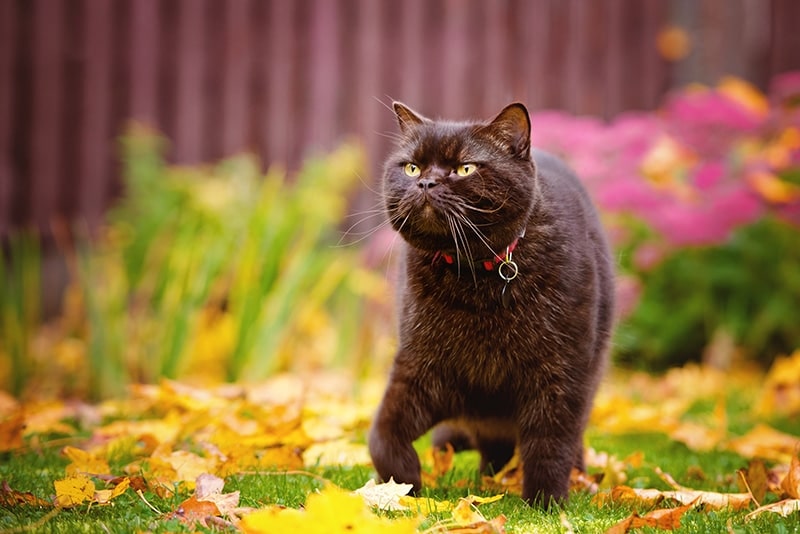
Unisex Cat Names That Start With K
Unisex names are often full of personality, and they’re perfect if you’re interested in finding a unique title or one that profoundly reflects one of your cat’s physical or personality traits.
- Koala
- Kas
- Kaine
- Koi
- Kendall
- Kibbles
- Kiyo
- Kitters
- Keys
- Kahlo
- K2
- Kaepernick
- Kalamata
- Kafka
- Kalamazoo
- Kangal
- Kaleidoscope
- Keener
- Keeper
- Kellogg
- Kentucky
- Kick
- Kook
- Kerr (Steve Kerr)
- Kettle (Kettle One)
- Kildare
- Khaki
- Kiddo
- Kirby
- Kinko
- Kingfisher
- Kingsolver
- Kissinger
- Kit
- Kohl
- Kokomo
- Kadin
- Katom
- Kelly
- Kodiak
- Kapp
- Karlsen
- Kalomiris
- Kats
- Kim
- Kori
- Kellen
- Khai
- Kenya
- Kenzi
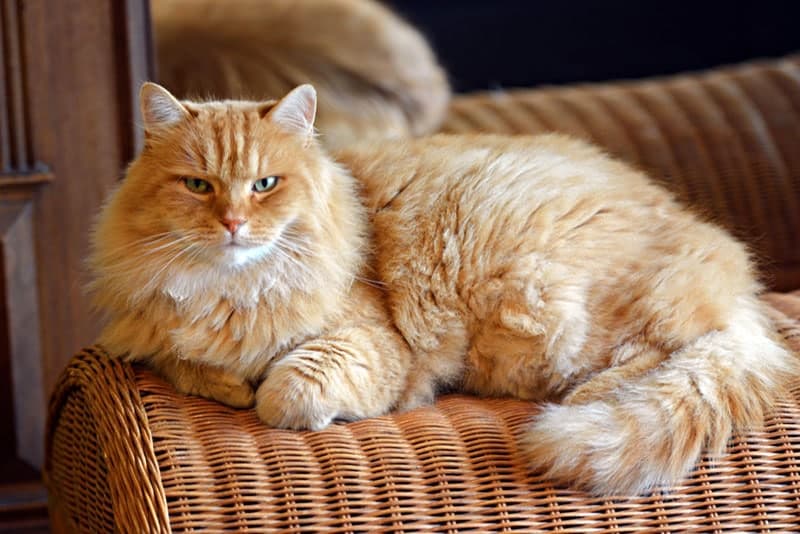
City Cat Names Starting With K
Many people name children after cities, so why not consider a few metropolises as inspiration for your cat’s name? You can pick a place you’ve always dreamed of visiting or one that has some connection to your cat.
- Kinshasa
- Kano
- Kabul
- Khartoum
- Kaduna
- Kobe
- Kara
- Karzan
- Koein
- Kingston
- Klang
- Kota
- Kumamoto
- Kotil
- Kerman
- Kuching
- Kimhae
- Koria
- Kisangani
- Kashgar
- KC (Kansas City)
- Kirov
- Korba
- Kolwezi
- Kursk
- Kaunas
- Kosti
- Kurgan
- Kashinwa
- Kaluga
- Kochi
- Katowice
- Kulti
- Kasur
- Karlsruhe
- Kupang
- Kaili
- Karamay
- Krefeld
- Kosice
- Kediri
- Kitchner
- Karur
- Kiel
- Kielce
- Kure
- Kassel
- Katihar
- Kalemie
- Kumba
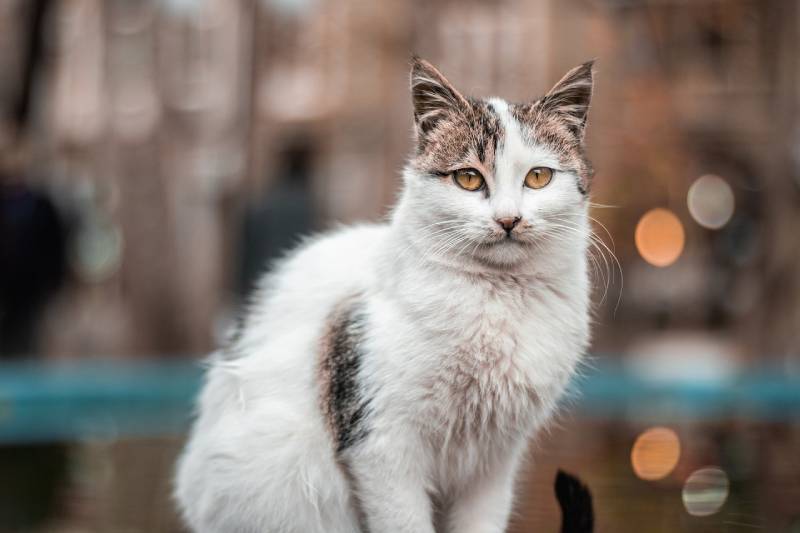
Food Cat Names that Start with K
Names inspired by tasty foods, yummy drinks, and scrumptious cocktails are great sources of inspiration if you’re all about good food, great beverages, and fantastic feline companionship. Most of the names on the list work for male as well as female cats.
- Kimchi
- Kabob
- Knish
- Kedgeree
- Kecap Manis
- Kasha
- Kipper
- Key Lime Pie
- Kettle Corn
- Kabocha
- Karonda
- Kale
- Kawa
- Keitt Mango
- Kapok
- Kurrat
- Kuka
- Kyona
- Karkalla
- Koroi
- Kanzi (Kanzi Apple)
- Kyoho (Kyoho Grapes)
- Komatsuna
- Kombu
- Kohlrabi
- Kei (Kei Apples)
- Kepel (Kepel Fruit)
- Keule (Keule Fruit)
- Kiwi
- Korlan
- Kutjera
- Kumquat
- Kenchur
- Kvass
- Kirsch
- Kava
- Kappa Colada
- Knickerbocker
- Kool Aid
- Kiwi Sparkle
- Knockout
- Kryptonite
- Kuoyamuli
- Keoke
- Kaytee
- Karlsson
- Kalte Muschi
- Kalimocho
- Kalabreeze
- Kaiser (Kaiser’s Jest Drink)
Conclusion
Coming up with the right name for your cat may take a while, but spending time making a good decision will pay off in the end, and you and your cat will be happy with your choice. Names that start with the letter K provide several options, from traditionally masculine and feminine choices to cute and fun ones. Don’t forget to ask for your cat’s opinion before making a final decision; they’ll probably give it to you anyway!
Related Reads:
- 140 Cat Names That Start With R: Popular Male & Female Ideas
- 300+ Cat Names That Start With F: Popular Male & Female Ideas
Featured Image Credit: Cong H, Unsplash

